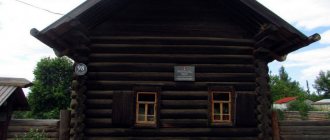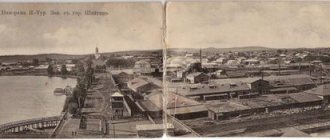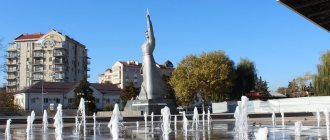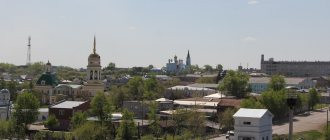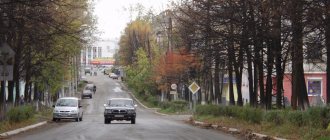For other places with the same name, see Shawls.
City in Chechnya, Russia
| Shawls Shawls | |
| City [1] | |
| Other transcription(s) | |
| • Chechen | Shela |
| Location of Shali | |
| Shawls Location of Shali Show map of Russia Shawls Shawl (Chechnya) Show map of Chechnya | |
| Coordinates: 43°09'N 45°54'E / 43.150°N 45.900°E / 43,150; 45.900 Coordinates: 43°09'N 45°54'E. / 43.150°N 45.900°E / 43,150; 45,900 | |
| A country | Russia |
| Federal subject | Chechnya [1] |
| Administrative region | Shali district [1] |
| City administration | Shawls [1] |
| Height | 225 m (738 ft) |
| population size (2010 Census) [2] | |
| • General | 47 708 |
| • Evaluate (2018) [3] | 53 807 ( + 12,8% ) |
| Administrative status | |
| • Capital from | Shali district [1], Shali city administration [1] |
| Municipal status | |
| • Municipal district | Shali municipal district [4] |
| • Urban village | Shali urban settlement [4] |
| • Capital from | Shalinsky municipal district [4], urban settlement Shalinskoye [4] |
| Timezone | UTC+3 (MSK[5]) |
| Postal code [6] | 366300 |
| OKTMO ID | 96637101001 |
Shawls
(Russian: Shali, Chechen: Shela,
Sela
) is a city and the administrative center of Shalinsky District in the Chechen Republic, Russia. Population: 47,708 (2010 census); [2] 40,356 (2002 census); [7] 24,985 (1989 census). [8]
History[edit]
Sheikh Mansur lived here in 1786.
Civilians killed during modern warfare (1994–present)[edit]
Main article: 1995 Shali cluster bomb attack
On January 3, 1995, during the course of the First Chechen War, Shali was repeatedly bombed with cluster bombs by Russian jets. [9]
Military journalist Anna Politkovskaya reported that on January 9 and 10, 2000, as Russian troops pursued the terrorists, dozens of civilians were killed in a rocket and mortar attack on Shali. [10]
origin of name
There are several versions among the people regarding the name given to the village. The most popular version is related to the location of the Shali River (a tributary of the Sylva ) near the urban settlement - according to this theory, the word “Shalya” comes from the Mansi word meaning “dark river”. There is also an interesting, but unlikely version that the village received its name in honor of the French engineer de Challet , who designed the railway in the area. However, according to historical facts, by the time it appeared in these parts, the Shalya River had long acquired its modern name.
Author of the photo: Lyudmila Golubtsova
Climate[edit]
Shali has a humid continental climate (Köppen climate classification: Dfa
).
| Climate data for Shali | |||||||||||||
| Month | Jan | Feb | Mar | Apr | May | Jun | Jul | Aug | Sep | October | But I | December | Year |
| Average high °C (°F) | 1,1 (34,0) | 2,8 (37,0) | 8,2 (46,8) | 17,0 (62,6) | 23,0 (73,4) | 27,3 (81,1) | 30,0 (86,0) | 29,4 (84,9) | 24,1 (75,4) | 16,6 (61,9) | 9,2 (48,6) | 3,5 (38,3) | 16,0 (60,8) |
| Daily average °C (°F) | -2,3 (27,9) | -1,0 (30,2) | 3,9 (39,0) | 11,2 (52,2) | 17,1 (62,8) | 21,3 (70,3) | 24,2 (75,6) | 23,5 (74,3) | 18,4 (65,1) | 11,7 (53,1) | 5,5 (41,9) | 0,4 (32,7) | 11,2 (52,1) |
| Average low °C (°F) | -5,7 (21,7) | -4,8 (23,4) | -0,4 (31,3) | 5,4 (41,7) | 11,2 (52,2) | 15,4 (59,7) | 18,4 (65,1) | 17,6 (63,7) | 12,8 (55,0) | 6,8 (44,2) | 1,8 (35,2) | −2,6 (27,3) | 6,3 (43,4) |
| Average precipitation, mm (inches) | 22 (0,9) | 25 (1.0) | 25 (1.0) | 39 (1,5) | 65 (2,6) | 78 (3,1) | 60 (2,4) | 47 (1,9) | 41 (1,6) | 34 (1,3) | 31 (1,2) | 24 (0,9) | 491 (19,4) |
| Source: [11] | |||||||||||||
Links[edit]
Notes[edit]
- ^ abcdefgh Decree No. 500
- ^ a b Federal State Statistics Service (2011). “All-Russian Population Census 2010. Volume 1" [All-Russian Population Census 2010, vol. 1]. All-Russian Population Census 2010 [All-Russian Population Census 2010]
. Federal State Statistics Service. - "26. The size of the permanent population of the Russian Federation by municipalities as of January 1, 2022". Federal State Statistics Service. Retrieved January 23, 2022.
- ^ abcde Law No. 10-RZ
- "On the Calculation of Time". Official Internet portal of legal information
. June 3, 2011. Retrieved January 19, 2022. - Post office. Information and computing center of OASU RPO. ( Post office
).
Search for postal service objects ( postal Search for objects
) (in Russian) - ↑
Federal State Statistics Service of Russia (May 21, 2004).
“The population of Russia, the constituent entities of the Russian Federation as part of federal districts, urban settlements, urban settlements, settlements, settlements of 3 thousand or more people” [Population of Russia, its federal districts, federal districts, districts, urban settlements, rural settlements - administrative centers and rural settlements with a population of more than 3000] (XLS). All-Russian Population Census of 2002 [All-Russian Population Census of 2002]
. - “All-Union Population Census of 1989. The current population of union and autonomous republics, autonomous regions and districts, territories, negative phenomena, urban settlements and rural district centers” [All-Union Population Census of 1989: current population of union and autonomous republics, Autonomous regions and districts , territories, regions, districts, towns and villages performing the functions of district administrative centers. All-Union Population Census of 1989 [All-Union Population Census of 1989]
.
Institute of Demography of the National Research University: Higher School of Economics [Institute of Demography of the National Research University: Higher School of Economics]. 1989 - via Demoscope Weekly
. - ↑
Tishkov, Valery (January 14, 2004). Chechnya: Life in a War-Torn Society. University of California Press. paragraph 133. ISBN 9780520930209. - ↑
Politkovskaya, Anna (January 31, 2000).
“CHECHNYA IS PART OF RUSSIA, BUT CHECHENS ARE NOT.” New Newspaper
. Archived from the original on October 31, 2022. Retrieved October 31, 2019. - "Climate: Shawls". Climate-Data.org. Retrieved December 26, 2017.
Brief history of Shali and Shalinsky district
CHECHNYA.
Since ancient times, the Chechen village of Shali was the capital of flat Chechnya. It was the largest spiritual, craft and trade center of the North Caucasus, located on the Dzhalka, Baso, Akhk rivers in foothills of Chechnya. The mild climate, indescribable fauna and flora attracted the attention of the ancestors of the Shalin people. Lines of people rushed here from mountainous Ichkeria. They settled along the banks of rivers, cut down the eternal forest, cleared the land, sowed grain, raised livestock, and built dwellings.
Many famous events in Chechnya took place in the Shali forests. The first imam of Chechnya, Sheikh Mansur, lived in the village of Shali. In the vicinity of Shali there were fierce battles during the Caucasian War under the leadership of Imam Shamil. People remember the places in Shali where the great religious figures of Chechnya stayed - Tashov-Khadzhi Sayasanovsky, Kunta-Khadzhi Iliskhanyurtovsky, Bamat-Khadzhi Avturinsky, Ali Mitaev, Elakh-molla and others. The largest religious educators - Avta - lived and carried out their spiritual activities in Shali -khadzhi, Shamsudin-khadzhi, Soip-molla Gaisumov, Khazhmurd, Molla Akhmad, Vooda, etc. Long before the formation of the administrative region, Shali residents and residents of surrounding villages had trade, economic and cultural ties with representatives of the multi-tribal Caucasian region.
The Shalinsky district with the regional center of Shali as part of the Chechen-Ingush Autonomous Region was formed by the Decree of the Chechrevkom on October 20, 1920. Beginning in August 1918, volunteers from Shali and surrounding villages as part of the Chechen Red Army bravely fought against the White Guard hordes. After the end of the Civil War, putting aside their weapons, representatives of different nationalities of Chechnya began to restore the destroyed economy - the oil complex, plants and factories. According to the recollections of old-timers, the village of Shali and the surrounding villages were destroyed. In 1919, the White Guards burned the villages of Berdykel, Ustradagoy, and Mesker-Yurt. There were fierce battles for the village. Tsatsan-Yurt, where representatives of all villages of the region took part. The best sons of the Shali residents died in a mortal battle with the White Guards.
In the twenties of the 20th century, the attributes of secular life began to penetrate into the Shali region, where the population professed the Muslim religion and lived according to the age-old way of life. Naturally, the people, living with their centuries-old traditions and ethnic values, did not accept elements of secular social life. The new Soviet government did not satisfy the traditionalism of the Chechen people. The revolutionary government in Chechnya pursued a goal: to establish a Marxist, materialist ideology by any means. According to the recollections of old-timers, in the spring of 1921, three Russian doctors arrived in Shali. A small outpatient clinic was built on the site of the current hospital. Then, the first school was built on the territory of the sanitary and epidemiological station.
The Soviet government in Chechnya set the goals of teaching Chechens Russian literacy, treating patients using traditional medicine, and introducing elements of proletarian culture. The new government invaded all aspects of the life of Chechen society. The Grozny Revolutionary Committee helped the Chechens rebuild on a socialist path. The workers took patronage over the villages of the region, repaired roads and agricultural equipment, and transferred food, salt, soap, and kerosene to the peasants. At this time, Russian agronomists, doctors and teachers appeared in the Shali region. All land was nationalized. Sent to Chechen villages, the Bolsheviks organized “Partnerships for joint cultivation of the land” (TOZ) and literacy centers. The first teachers, Sergei Ustimenko and Maria Pavlovna, who taught them to read and write, remain in the memory of the older generation to this day. In those years, there were madrassas in the area where children were taught Arabic literacy. The Soviet government carried out a writing reform. In the 20s of the 20th century, the Latin script began to be introduced among the Chechens, and in 1938 the Chechen written script was translated into Cyrillic.
Schools and literacy centers were established in the Shalinsky district. Teachers-educators of the thirties and forties made a huge contribution to the cause of education in the region - Ala Avtakhadzhiev, Amy Dikaev, Akhmad Iriskhanov, Ismail Matsayev, Mukhadi Soltamuradov, Beshi Beligov, Ala Khasaev, Khamid Suleymanov, Amerkulan Magomerzaev, Sharpudi Dzhunaidov, Vahit Basnakaev, Shahid Ibragimov, Lom-Ali Eldarov and others.
.
The authorities introduced the achievements of technology of that period into the life of the Chechens. The first steam mill was built in Shali, and English tractors appeared in the fields.
A national intelligentsia is emerging in the republic. People from the Shali region made their contribution to the development of the economy, science and culture of Checheno-Ingushetia - engineer Yakub Eziev, writer Saidbey Arsanov, poet Nurdin Muzaev, lawyer Salavdin Zarmaev, scientist Abdul-Halim Salamov, printer Zaid Musaev, journalist Ali Paykhaev, party leaders Alak Geyev, Shirvani Dachaev, Zelimkhan Mezhidov and others. The names of the leaders of the Shali region of that period are also known - Isepin Doka, Aki Mataev, Said Abumuslimov, Umar-Khadzhi Adakhanov, Doku Suleymanov, Said-Selim Geyev, Umar Tsintsaev, Israpil Kharkimov, Uvays Magomerzaev , Dzhunid Umarov, Zaindi Tashtamirov, Delhi Zangaev, Khalid Ismailov, Zaurbek Munaev, Ziyaudin Demilkhanov, Dzhamlaila Dzhunaidov, Khamid Mezhidov, Vakha Nebiev and others.
The Bolsheviks promised the Chechens freedom, land, and equality. However, peasants were forcibly driven into collective farms, horses, livestock, and land plots were confiscated. Thousands of wealthy peasants were dispossessed and deported. Farmers condemned forced collectivization. In 1929 in the village. Shali, the former commander of the Red Army, Shita Istamulov, launched an armed rebellion. The uprising was suppressed. In those days there were many religious figures from the village. Shawls were arrested and exiled to Siberia.
During the Great Patriotic War, thousands of Shalin residents fought on the fronts. A resident of the village fought bravely in those stormy years. Novye-Atagi Hero of Russia Movldi Umarov. The titles of Heroes of the Soviet Union were awarded to Shali residents Zaindi Khalidov and Ali Dergiev, but the well-deserved awards did not reach the heroes. Hundreds of soldiers and officers from the Shali region fought on different fronts, repelling the invasion of fascist hordes. Their names are carved in gold on marble on the obelisk to the fallen soldiers in the city of Shali. These are: Zaindin Khalidov, Ali Dergiev, Zelimkhan Mezhidov, the Akhtaev brothers, Yakub Eziev, Shukurbi Piraev, Ali Paykhaev, Salman Didayev, Akhyad Gulaev and many others. Every year the ranks of veterans of the Great Patriotic War are thinning. But even today our veterans are in service: Imran Mutsaev, Movldi Mezhidov, Khizir Nunaev, Medan Alishanov, Magomed Shakhaev, Sultan Chapanov, Magomed Khadzhimuradov, Mukhadi Zangaev and others.
In 1944, Chechens were forcibly deported to Kazakhstan and Kyrgyzstan. Those who created the Grozny industry, participated in collective farm construction, and defended their Motherland on the fronts of the Great Patriotic War were undeservedly repressed. Despite the difficult situation, hunger, and disease, Chechens in Kazakhstan and Kyrgyzstan took part in the restoration of the country's industry and agriculture.
In 1957, the 20th Congress of the CPSU adopted a resolution on the rehabilitation of repressed peoples. Chechens and Ingush returned to their historical homeland - the newly created Chechen-Ingush Republic. From the very first days of the restoration of Checheno-Ingushetia, the republic turned into a huge construction site. In all regions of the republic, people built their own residential buildings. The Chairman of the Council of Ministers of the Chechen Autonomous Soviet Socialist Republic, Muslim Gairbekov, paid close attention to his studies. Vocational schools functioned in the republic. Many boys and girls from the Shalinsky district mastered working professions in the vocational school system and worked in factories, construction sites, and in the consumer services sector. Hundreds of applicants in those years entered the country's universities and mastered the professions of engineers, doctors, teachers, agronomists, etc.
In the Shali region in 70-80. significant industrial potential was concentrated. The Checheno-Ingush cement plant, the North Caucasus broiler poultry farm, the Kavkaz poultry farm, a reinforced concrete products plant, a brick factory, construction organizations, a brewery, and a regional food processing plant operated in the area.
Significant contributions to the development of science were made in the 70-80s by scientists from the Shali region: Ibragimov Khamzat, Khadzhiev Salambek, Chakaev Kati, Israilov Ibragim, Kindarov Baron, Bagaev Musa, Barzaev Rizvan, Sadaev Akhmad, Dauev Salamu, Tsakaev Alkhazur, Mankiev Ayub, Askhabov Khavazh, Gairbekov Ibragim, Nunaev Vakhash, Ependiev Tamerlan, Ikhanov Elakh, Rasuev Makhmud, Paskachev Aslambek, Bataeva Leila, Dykhaev Vakha, Paskachev Abdulbek, Salamova Raisa and others. Unfortunately, today there are no wonderful scientists among us Dombaev Mussa, Vagapov Yakub, Saidov Ibragim, Bibulatov Nurdin, Manaev Amerbek, Bisliev Abdul-Khamid.
Literary and artistic figures from the region made a great contribution to the culture of Checheno-Ingushetia: Honored Artist of the RSFSR Dagun Omaev, who played roles in 40 films, People's Artist of the Chechen-Ingush Autonomous Soviet Socialist Republic Bilukhazhi Didigov, artist Sulumbek Idrisov, Alkhazur Ganaev; artists - Dadan Idrisov, Arbi Rasukhanov, Ramzan Maltsagov, Tamara Bazakaeva and others; writers - Saidbey Arsanov, Umar Gaisultanov, Kanta Ibragimov, Makhma Basnakaev; poets - Nurdin Muzaev, Movladi Magomadov, Aslambek Osmayev, Ramzan Akhmarov, Abu Edelkhanov, Magomed Ependiev, Abu Utsiev and others.
The volume of agricultural products increased significantly in the 70-80s. Measures were taken in the region for the comprehensive mechanization of the agricultural sector of the economy. The chairman of the district executive committee, an experienced organizer, Makhma Basnakaev, made a significant contribution to the development of the region’s economy. The greatest successes in work were achieved by the foreman of the tractor-field brigade of the Dzhalka state farm, Baudi Saidov, and the beet-growing team leader, Tamara Muslieva. For their labor successes they were awarded the title of Heroes of Socialist Labor. Hundreds of field and farm workers were awarded orders and medals. The district annually coped with the production and delivery of grain, milk, meat, eggs, vegetables and fruits to the state. During these years, housing, schools, cultural institutions, consumer and social services were built and put into operation in the area.
Major changes in the area have occurred in the housing and social spheres. The national economy employed specialists with higher and secondary education. In the last three decades, before the outbreak of hostilities, the villages of the Shali region were transformed. Solid roads were laid, bridges were built, shops, shopping centers, cafes, canteens and restaurants were opened.
The hostilities brought irreparable damage to the area. Grief, devastation, and destruction replaced peaceful life. Hundreds of people were killed, villages were destroyed, industry, transport, communications, and the agricultural sector were paralyzed. Unemployment arose. During the period of chaos and anarchy, military operations, the Shali residents did not give up their region to the renegades. Badrudin Dzhamalkhanov, Salambek Khadzhiev, Mansur Abaev, Ali Alavdinov, Alash Saikhanov, Akhmad Sadaev worked in the Provisional Government of Chechnya, who did a lot to preserve the region and the city of Shali. The best sons of the city, risking their lives, joined the Council to save the city and region. The Council included: Alkhazur Ibragimov, Makhma Basnakaev, Magomed Dishnyaev, Magomed and Lema Dargaevs, Khamzat Dzhunaidov, Khas-Magomed and Ala Abumuslimovs, Anzor Balathadzhiev, Lecha Abkaev, Imran Iriskhanov, Musa Dakaev, Musa Denilkhanov, Mansur Abaev, Khavazh Askhabov, Aslambek Sardalov, Ziudin Bibulatov, Labaz Musaev, Mukhadi, Baudi, Apti Saidov, Jalavdi Chapsurkaev, Umar Khasaev, Abaz and Bekkhan Khakhaev, Avalu Abubakarov, Gazimagomed Khadzhimuradov, Ayub Batukaev, Abdulbek and Abu Tashukhadzhiev, Abdulla Musaev, Usam Abdulkadyrov, Andarbek Abaev, Movladi Magomadov, Sultan Muskaev, Badrudi Paytaev, Doku Bibulatov, Sultan Yusupov, Abdul-Baki Amerkhadzhiev, Khazhi Umarov, Said-Hasan Dagalayev, Isa Yunusov, Ayub Dzhunaidov, Nazhmudin Nasukhanov, Kharon Kukushev and others. Thanks to the intensive work of the Council, the city was saved from destruction and robberies, hundreds of lives of Shali residents were saved.
At the end of 1999, an initiative group consisting of Khas-Magomed Abumuslimov, Lechi Dzhambekov, Zaurbek Selimsultanov, Sultan Dadaev, Jalavdi Aslakhanov, Musa Khutaev and members of the Council for the Rescue of the City raised the Shali residents to fight the mercenaries. A gathering of citizens took place in the mosque, which decided to expel the bandits from the city, thanks to the painstaking work of the imam of Shali and the masses, the bandits were expelled.
After the war, important political events took place in the republic, a referendum was held. Akhmad-Khadzhi Kadyrov was elected the First President of the Chechen Republic. The hopes of the people came true; under his leadership, the process of resolving the Chechen problem, the rise of the economy, and changes in social life began. The goals and guidelines for the process of revival of the Chechen Republic were determined. People with the name of President A-H. Kadyrov associated the beginning of a new, bright era in his history, when hostilities ceased, conditions for the transition to a peaceful creative life were created, and a huge contribution was made to the restoration of the economy of the Chechen Republic. But on May 9, 2004, the life of this great son of the Chechen people was tragically cut short. As was said by the President of Russia V.V. Putin, he left undefeated.
Today, Akhmad-Khadzhi Kadyrov is not among us. Those who continue his work will not deviate from the path he indicated. At that time, Sharip Alikhadzhiev was appointed head of the Shali district administration, who, year after year, with hard work, pursued a peaceful, creative policy in the region.
The leadership of the Shali region today faces big problems in the field of economics, education, health care, and culture. One of the main ones is the lack of housing, schools, child care facilities, and hospitals. The republic has developed a special program that will allow achieving real results in three to four years, as well as a program for the development of the industrial complex. To restore the cement plant, concrete products plant, brewery, and broiler poultry farm, investment and federal target programs will be actively implemented.
The basis of agro-industrial policy will be the creation of efficiently operating farms. Priority will be given to growing grain, corn, sugar beets, vegetables and fruits. The district food processing plant for processing agricultural products will be restored. Peasant and farm enterprises will receive support. Through joint efforts we will overcome the existing problems in restoring the region’s economy and create a decent life for the residents of both the region and the republic.
Imran Iriskhanov, labor veteran, journalist
checheninfo.ru





